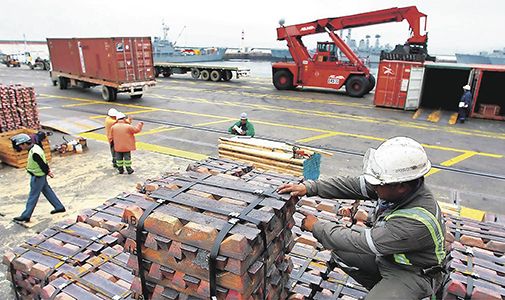Among so many differences that the policy towards Latin America of the president of the United States, Joe Biden, has with that of his predecessor Donald Trump, there is a similarity: migration is a priority.
The US goal remains to reduce the irregular flow of people entering the country; Trump tried with threats and severe measures, Biden promises to address the causes of emigration in Central America, such as poverty, violence or corruption.
But some analysts note that Washington still lacks a broader strategy toward its southern neighborhood, including economic, commercial or even health initiatives in the face of the covid-19 pandemic.
In this context, Richard Feinberg, a professor of international economic policy at the University of California San Diego, launches a bold idea: that the US include the countries of the Caribbean basin in its domestic economic plan.
This would mean adding from Mexico to Central America and Colombia to Biden’s initiatives to improve infrastructure, digitization, education and job training in the United States, explains in an interview Feinberg, who directed inter-American affairs at the National Security Council of the White House during the government of Bill Clinton (1993-1996).
What follows is a synthesis of the talk, translated and edited for clarity, with this expert who also worked in the US departments of State and Treasury and recently published his proposal at the Wilson Center in Washington:
Your proposal probably reflects the idea that something must change in the way the US views Latin America …
The Biden administration is just beginning. The problem is that the region is not doing well enough.
I am not one of those who say that all of Latin America’s problems are due to the failure of US foreign policy. Countries must take responsibility for their own stories.
Now, the United States has an interest, like any great power, in countries of its near exterior.
Western Europe deals with Eastern Europe, Southeast Asian China, in the sense that they see their destinies as inevitably intertwined by geopolitics. This is in the interest of the great powers to promote economic prosperity and political stability.
What I recommend is a series of policies that encourage work with Central American and Caribbean countries, both of interest to the US and the region: more economic growth distributed more equitably and stronger, more vibrant and democratic institutions.
Isn’t the US doing that?
The Biden government has only been in place for 100 days, it is very early.
What he has suggested is a more or less traditional foreign assistance program to the Northern Triangle countries (Guatemala, Honduras and El Salvador) of some US $ 4 billion over four years. Of course, they have to define what they are going to ask for and go through Congress.
The Biden government agrees with many academic analyzes that say that the main problem in the Northern Triangle and in other developing countries has to do with the quality of government: it does not represent the population well, the institutions are weak, they cannot implement policies and a large amount of money disappears into the pockets of corrupt officials and politicians.
The Biden administration wants to focus more on those problems.
I could agree, but I don’t think that’s enough given the depth of the problems that we see in some of the countries in the region.
So I suggest a completely different approach.
The Biden administration is launching a whole series of extremely ambitious initiatives in the domestic economy and society.
But the analysis made by the Biden government is very similar to what can be done in the Caribbean basin: there are problems of infrastructure, digitization, job training, health, education and also urban violence.
These are problems that are seen both in the US and in the countries of the Caribbean basin.
And what do you propose?
What I propose is that the government take many of the programs that are being designed mainly for the domestic economy and extend them throughout the Caribbean basin.
For example, the government has already said that many programs that have to do with climate change and clean energy should also be applied to the Caribbean basin, to try to move countries away from hydrocarbons, invest more in clean energy sources .
That is also true for digitization. Central America and the Caribbean have advanced dramatically in terms of internet access, but there is often a long way to go in smaller towns in rural areas, such as in the United States.
Similarly in infrastructure: roads, ports, airports … As we are doing in the US, we could help finance projects in Central America and the Caribbean.
Ultimately, investment and growth are needed to support good social programs and public sector spending.
The government has advocated for innovation centers or technology centers that it would help fund in the US And this is related to the issue of supply chains: American corporations have become very global in their sourcing policies.
Many of the US companies have located their production facilities in Asia, particularly China. We discovered over the years that this created certain vulnerabilities.
The Biden administration says it would like to see some of those supply chains moved from Asia to the US But in most cases that would not happen because we are not cost competitive on certain production lines.
My point is that some of these centers may also be located in Central America and the Caribbean, and that the US can help finance infrastructure, working with multilateral banks such as the Inter-American Development Bank and the World Bank, as well as with private sector investors, both international and national, to put these centers into operation.
That would create a lot more jobs in the region, to intertwine its economy with that of the US.
Which countries are you referring to exactly when you talk about the Caribbean basin?
I am referring to Central America, not just the northern zone —which is what the Biden government focuses on due to immigration— but it would include Nicaragua, Costa Rica and Panama. And then the Caribbean islands, Colombia, Venezuela, which of course is a special case but is part of the basin, and Mexico.
How do you suggest financing this expansion of domestic programs to the region when there are already questions about how the Biden government can finance them at the national level?
If you include the programs in a foreign aid budget, it is very difficult to get Congress to pass them.
So what I suggest is to include the programs in these great domestic initiatives. Biden has advocated for $ 2.7 billion in the Build Back Better Initiative , also known as investing in jobs.
How will they be paid? There are basically two sources: the tax hike, which is what Biden has proposed, and the financing of the deficit. Because interest rates are very low, the government can issue bonds with modest interest rates in the future.
The US already has a free trade agreement with Mexico and another with Central America plus the Dominican Republic that liberalized trade and services. But that did not help reduce the flow of migration, violence or corruption in the region. Why would an initiative like the one you propose have a better result?
These various business initiatives have created many jobs in the region.
On the US-Mexico border there are something like 2 million Mexicans working in maquilas or supply chains linked for the most part to US manufacturing companies.
Trade agreements cannot solve all problems. The fact that there are problems of corruption and inequality in Mexico is not the fault of NAFTA, which did what it is supposed to do: increase commercial investment flows and create more jobs in Mexico.
Similarly in Central America. There are some 500,000 jobs in the region that support perhaps 2.5 million Central Americans in supply chains alone. That is a contribution.
You cite the example of the maquiladoras and propose the creation of different centers in the region to produce for the US market. What would be the difference between these centers and the factories created by free trade agreements that are now seen as symbols of poor labor standards?
Who considers them? If you were a young woman in Central America with six to nine years of education, you would be happy to get a job in one of those factories. I am telling you this because I have talked to a lot of people there.
Now, could conditions improve? Yes, of course. What I am advocating is that the US signs social agreements with host countries that include protections for workers’ rights, the environment, and community rights.
And there would be extensive supervision: national and international auditors of compliance with the agreements.
Another of the great problems of the region is corruption. How would you prevent any investment from ending up in the pockets of officials?
As a requirement for these agreements, oversight mechanisms could be created, including the US government, with agencies that would have their offices in the field, so that there is full transparency to limit corruption.
I am not going to tell you that they are going to eliminate it overnight. But you can put in place mechanisms that provide some guarantees, and then, over time, try to strengthen national institutions and staff training.
You have warned that the US employment plan presented by Biden for domestic politics could harm the Central American economies. Why?
That is if you are serious about wanting American companies that source their supply chains from factories abroad to return to the United States.
There are around 500,000 jobs in Central America alone, and if each worker supports a family of five, there are 2.5 million citizens who would potentially lose their jobs and family income.
Source:
- Gerardo Lissardy
- BBC News World, New York






